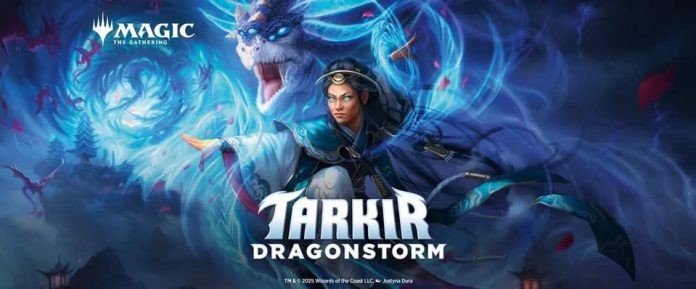Magic’s newest expansion takes us back to the plane of Tarkir, as dragonstorms rage out of control after the departure of Ugin and the creation of the Omenpaths. A new set means new mechanics, and we’ve got some good ones. In this article we’ll talk about the mechanics and offer some thoughts on what they mean for Commander and other formats and how they’ll play.
Tarkir: Dragonstorm will release to Magic: the Gathering Online and Arena on April 8th, 2025, and to the tabletop on April 11th.
New Mechanics
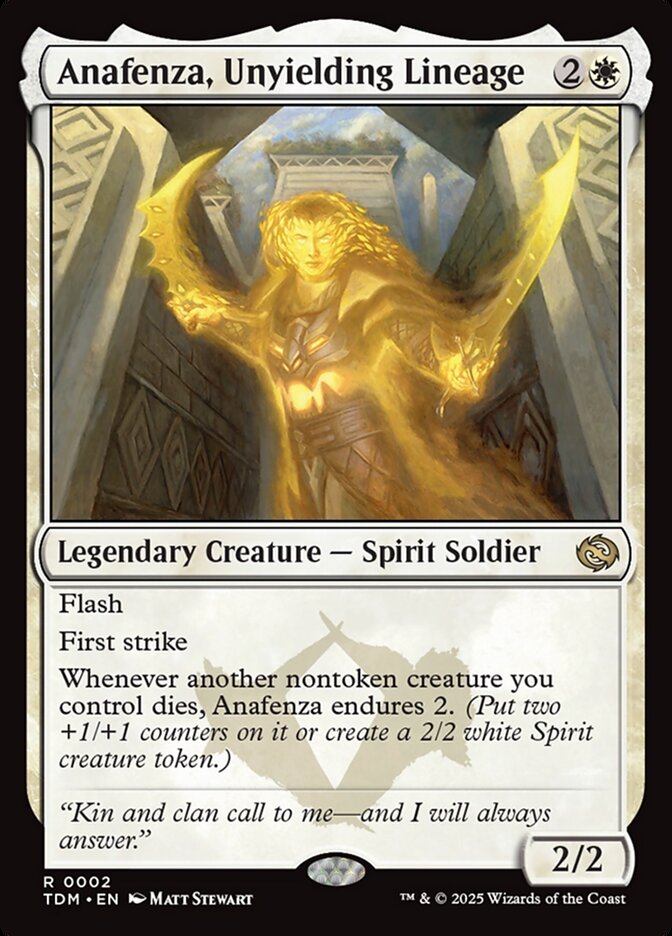
Endure
Endure is a simple triggered ability with an X value found on creatures, and each time it triggers you choose to either put X +1/+1 counters on the creature or create an X/X Spirit creature token.
FromTheShire: It’s not flashy but this is a really solid ability. The same kinds of decks that like making counters usually benefit from making tokens and vice versa, and this lets you pick which one is better for you at any given time. Even if they kill the creature in response, you just get the Spirit.
BPhillipYork: By itself this isn’t a hugely powerful ability, but it depends on how repeatable the endure is or it can be given out. Triggered endure could be potentially powerful for things like aristocrats, like on the Anafenza, Unyielding Lineage could be part of a loop or just generating mad sacrifice value. If your deck really cares about +1/+1 counters, and/or proliferating, and/or populating or doubling tokens there’s some space you could explore, but in terms of just an ability on a random creature it’s not terribly exciting.
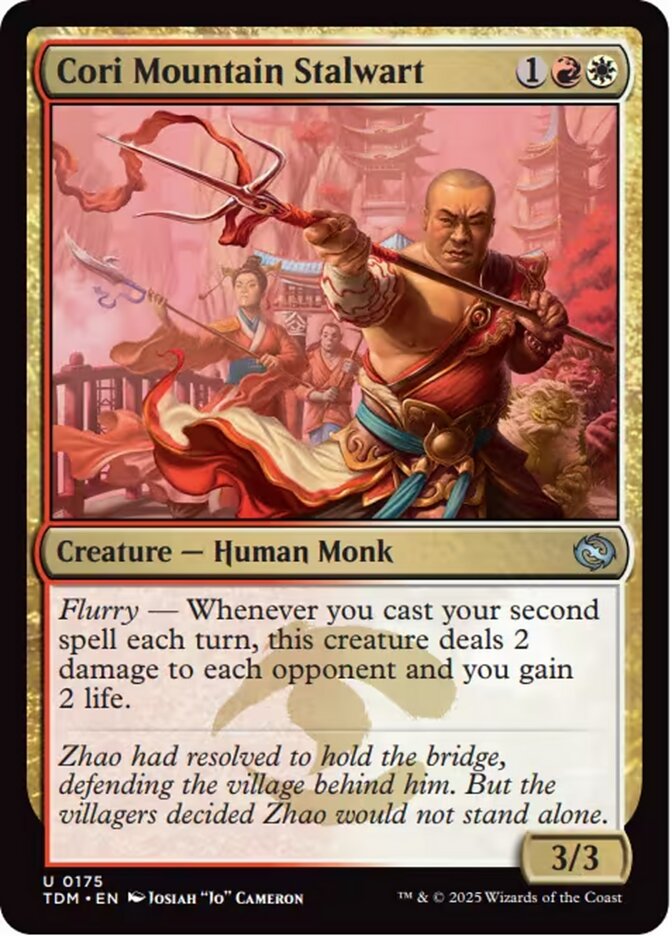
Flurry
Flurry is a codification of an ability that has appeared quite a few times before, where whenever you cast your second spell each turn you get an effect.
FromTheShire: Again this isn’t wild, and actually has appeared on a bunch of cards but is being keyworded now. The effects tend to be more powerful in 60 card than Commander, though they still have utility there as well. I’m curious to see if we get something horrific enough that it finally breaks the straw and gets Monstrous Rage banned.
BPhillipYork: Spellslinger is pretty neat IMO, red has a lot of solid cast triggers now and ways to generate mana off casting spells, and this is per turn rather than on your turn and it generally encourages interacting. There’s also a pretty decent interaction with prowess, since generally spells that cast a lot tend to cast a lot of noncreature spells. Generally I think effects like this are good for the game because they encourage interaction, and just straight action, and Commander games often tend towards ponderous board state creation.
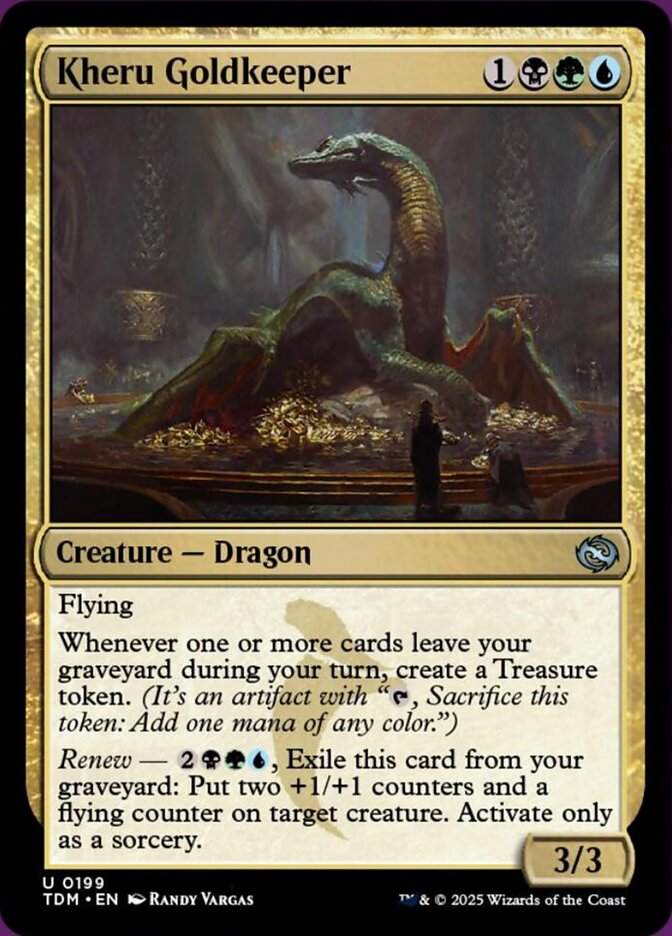
Renew
Renew abilities require you to exile the card with renew as a sorcery, and then get the indicated effect. All renew effects will involve putting various counters on creatures, usually +1/+1 counters, but sometimes others such as the flying counter on Kheru Goldkeeper. There can be additional effects. as well, though that is much more rare from what we have seen so far.
FromTheShire: This feels like a very appropriately Sultai mechanic, basically Scavenge with further upside. The original is generally kind of underwhelming, but the addition of other types of counters means this may actually see some play. It does still suffer somewhat from being fair and grindy by virtue of always being sorcery speed.
BPhillipYork: This is flashback + channel which is fine, you’re essentially flashing back the channel effect rather than casting it from your hand. There’s a number of solid things here, it plays really well with mill, gets you some added value out of things you’ve put in your yard, and isn’t a spell per se so can’t be countered. So far sadly it’s all as a sorcery which is kind of sad since a nice source of interaction in your yard would be really good. I sort of get a kick out Rot-Curse Raksaha which uses renew to place decayed counters, which is sort of an oxymoron. It’s a fine mechanic but so far there’s not a lot to do with it, possibly if you had some kind of ability that gave everything a renew or something that would be fairly exciting.
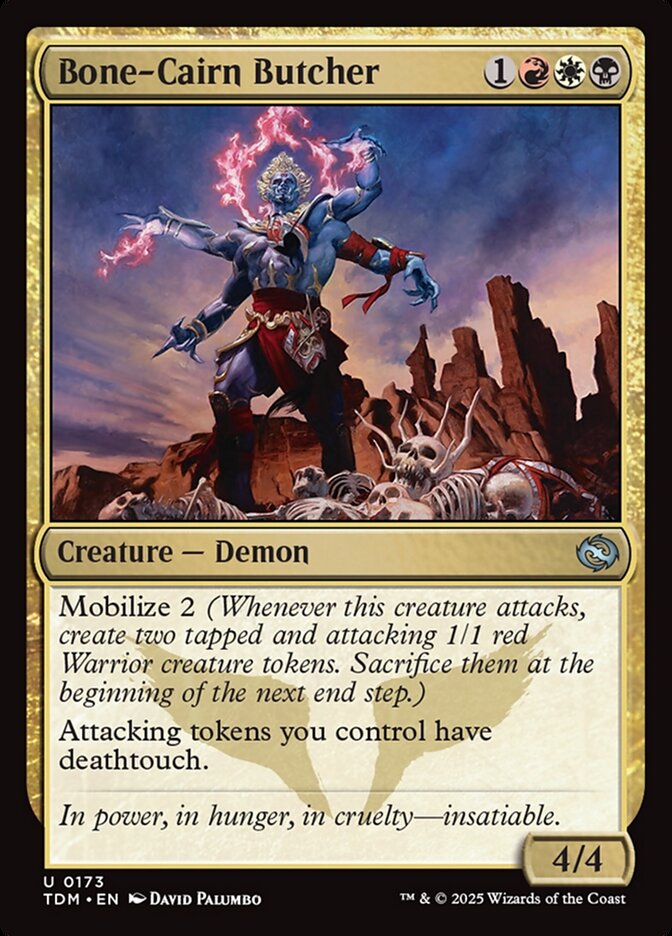
Mobilize
Mobilize X tells you how many tapped and attacking 1/1 red Warrior creature tokens you create whenever the creature in question attacks. Those tokens will then sacrifice themselves at the next end step.
Do remember that since they enter tapped and attacking they won’t trigger any “whenever a creature attacks” abilities, and don’t have to pay for effects like Propaganda.
FromTheShire: I’m playing a couple of different aggressive decks on Arena right now, and I’m looking forward to trying some of these out. From the look of War Effort we’re probably not getting a proper Lord which is disappointing, but even so this is great for pushing through damage. If you can actually get them to stick around with Zurgo in addition, it’s going to be a real problem for your opponent.
BPhillipYork: This is a nice way to generate a bunch of temporary attackers, but it’s really pretty hard to do much that’s very impactful with it since they don’t attack, they enter tapped and attacking, and they go away at the end of the turn. The new Zurgo, Thunder’s Decree is kind of fun with this ability preventing the sacrifice. The most powerful things you could probably do this are on hit triggers, and potentially looping extra combats, but the Mardu colors means it’s hard to work in blue Coastal Piracy effects which would really be impressive. However a couple of the mobilizers have their own triggers when creatures enter or die, which is really both sides of the trick on one card. If you’re using these to generate these other tokens, or sacrificing them for value in aristocrats, that’s going to do a fair amount. They also helpfully move the game along, which I’m just generally in favor of.
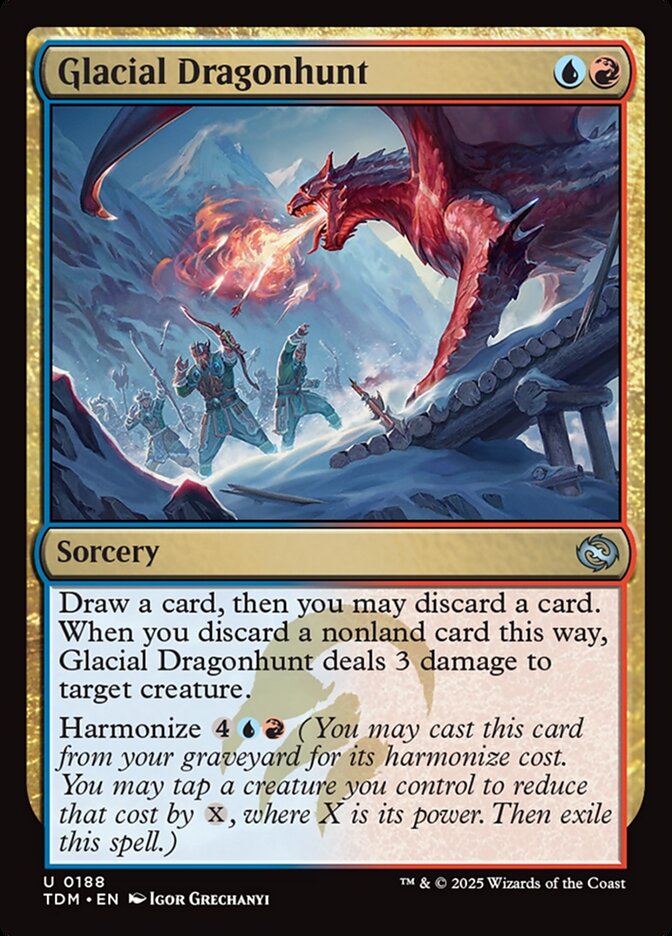
Harmonize
Harmonize lets you flash back a card from your graveyard by paying its harmonize cost, while also allowing you to tap a creature you control to reduce the cost by that creature’s power.
FromTheShire: Flashback is very popular for a reason, and that reason is it’s great to be able to cast your spells a second time late in the game when you’re searching for something to do. Adding the cost reducer feels like something we’re all going to hope they didn’t miss any interactions with in playtesting, though you have two constraining factors in needing a big enough creature to tap and the spell exiling itself. Still a big fan, a lot of the time late game you will have both the extra mana and board stall to use these.
BPhillipYork: Okay so this is just flashback with a sort of pumped convoke on it. That’s fine, it lets you double dip on a card which is useful and also get some value out of creatures that are just sitting around if they can’t attack, though it incentivizes that passive board state building. If you can further leverage this because you actually want to tap the creature, i.e. with something like Magda, Brazen Outlaw, then suddenly you’ve got a solid value generating deal going on by turning a cost into a benefit. Generally though I’d say the harmonize costs are too high and they are unlikely to come up much.
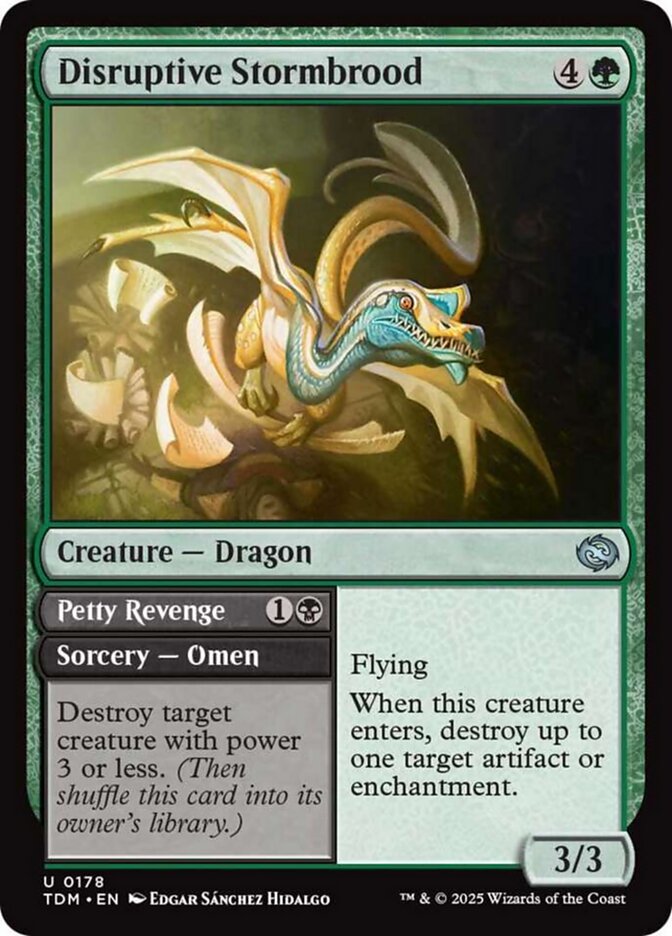
Omens
Omens are similar to Adventure spells, and can be found on a number of the Dragons in the set. You choose which half you want to cast and then it acts like any normal spell. Unlike Adventures, when they resolve they shuffle back into your deck rather than exiling themselves for later.
FromTheShire: Modal spells/ spells that scale late game are always a plus, and that’s essentially how these function. Early on you can get a useful effect, and then eventually you get to windmill slam your big splashy Dragon once you can afford to. Effectively not using up the card is excellent, and from what we have seen the vast majority of these have at least some early game utility. I could even see having access to a shuffle effect when you want being useful.
BPhillipYork: This is an interesting variant on adventures, and that’s obviously the intent since they are templated the same way. The ability to cast a spell over and over is potentially really powerful, if you can thin your deck successfully, possibly with Doomsday. Things like Stormshriek Feral‘s Flush out are really pretty useful spells that you could just want to cast over and over, and ignore the dragon completely. I really like that flexibility, and a couple of the omens are really good, like Exude Toxin on Scavenger Regent. That will see play purely for it’s board clear effect, which gets around hexproof and indestructible in a nice way.
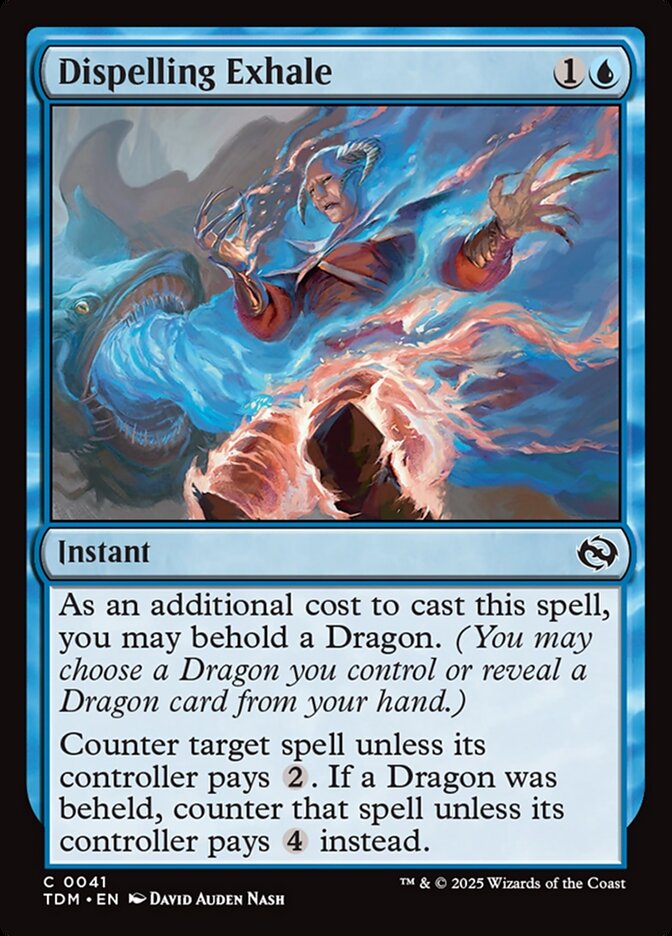
Behold
This is another returning as a keyword effect. To behold a Dragon, you may either choose a Dragon you control or reveal a Dragon card from your hand to gain an additional effect.
FromTheShire: So far this is a common cycle plus Sarkhan, Dragon Ascendant but don’t let that fool you, they all look quite solid. For the most part they are either playable or nearly so even without being able to behold, and only get better if you can. I expect we’ll be seeing a lot of these, at least in sideboards if nowhere else.
BPhillipYork: Reveal or already control a dragon, or pay more or get an additional benefit. It’s a kind of kicker additional cost variant focused on Dragons, which is fine. There’s so many dragons now, and they’ve actually printed so many solid medium cost ones over the last couple of years they are no longer absurd joke creature type, but rather can pack a lot of wallop as well as being heavy hitters. Cards like Terror of the Peaks are just good, so it’s neat to see another creature type centric mechanic like prowl. Most of the actual behold cards so far revealed are pretty lackluster, but they’re fine.
Returning Mechanics
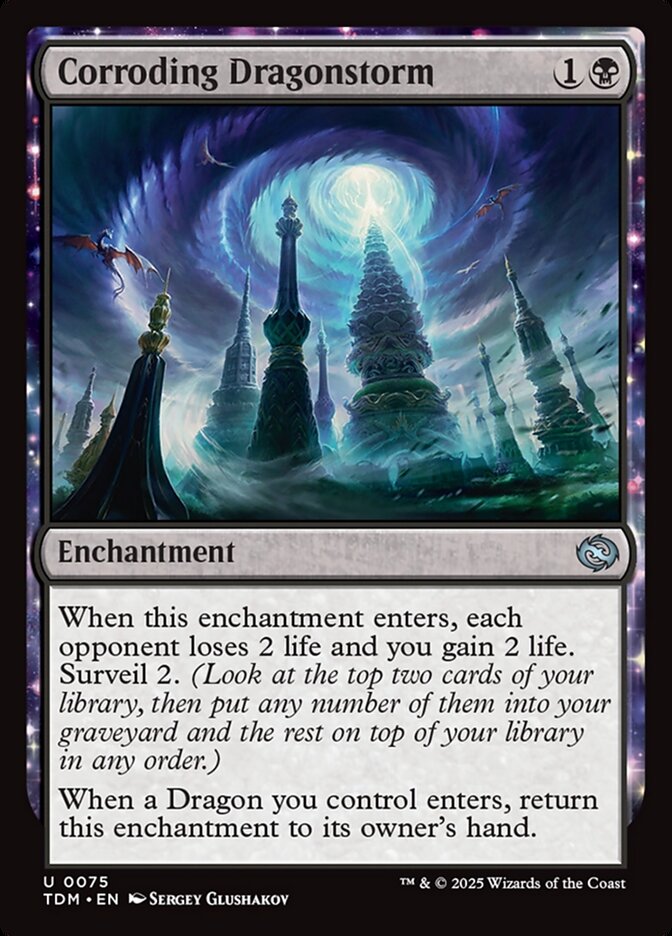
Surveil
FromTheShire: Surveil is great card selection that is always welcome in a set, and even more so in ones with graveyard subthemes as it seems like we will have here in Sultai.
BPhillipYork: This like evergreen or deciduous at this point, and works well with the various additional value from the yard abilities in the set.
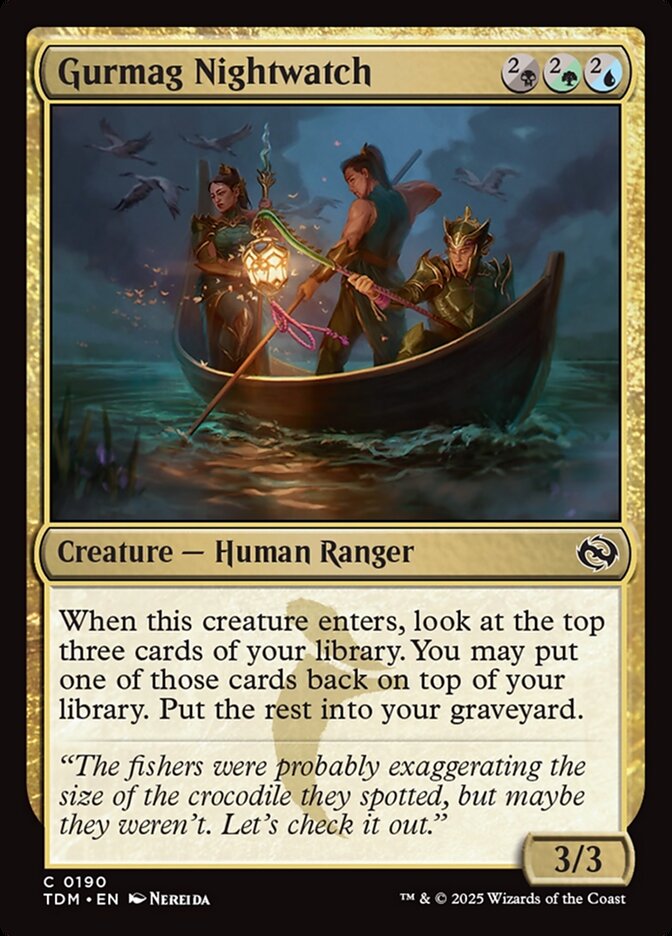
Hybrid Mana
FromTheShire: It’s worth noting that regardless of how you pay for each symbol, that symbol still adds 2 to the card’s mana value, so Gurmag Nightwatch’s mana value is always 6. Color identity works as normal for Commander. Otherwise nothing new about this.
BPhillipYork: I like hybrid mana, but there’s not a lot to say about the mechanic, other than for commander it requires both, not either.
Next Time: The Set’s Multicolor Cards
That wraps up our look at the mechanics of Tarkir: Dragonstorm. We’ll be back later to look at the most noteworthy cards in the set, starting with the multicolor cards in the main set, then in the following articles we’ll cover the monocolor and colorless cards before moving on to the set’s Commander decks.
Have any questions or feedback? Drop us a note in the comments below or email us at contact@goonhammer.com. Want articles like this linked in your inbox every Monday morning? Sign up for our newsletter. And don’t forget that you can support us on Patreon for backer rewards like early video content, Administratum access, an ad-free experience on our website, and more.
